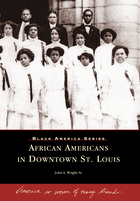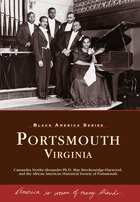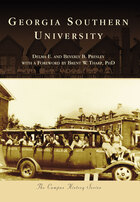Browse Titles - 1881 results
Adventures in Apache Country: A Tour Through Arizona and Sonora, with Notes on the Silver Regions of Nevada
written by John Ross Browne, 1821-1875 (New York, NY: Harper and Brothers, 1871), 535 page(s)
Sample
written by John Ross Browne, 1821-1875 (New York, NY: Harper and Brothers, 1871), 535 page(s)
Field of Study
American History
Content Type
Essay
Author / Creator
John Ross Browne, 1821-1875
Date Published / Released
1871
Publisher
Harper and Brothers
Topic / Theme
Migration and Diaspora
×
Interview of Ellis Wilson by Camille Billops, February 25, 1975
written by Ellis Wilson, 1899-1977 (1975); edited by James V. Hatch, 1928- and Leo Hamalian, 1920-2003; in Artist and Influence, Vol. 13, Artist and Influence, 13:1-234 (1994) (New York, NY: Hatch-Billops Collection, 1994), 220-233
Sample
written by Ellis Wilson, 1899-1977 (1975); edited by James V. Hatch, 1928- and Leo Hamalian, 1920-2003; in Artist and Influence, Vol. 13, Artist and Influence, 13:1-234 (1994) (New York, NY: Hatch-Billops Collection, 1994), 220-233
Date Written / Recorded
1975
Field of Study
Black Studies
Content Type
Oral history
Contributor
James V. Hatch, 1928-, Leo Hamalian, 1920-2003
Author / Creator
Ellis Wilson, 1899-1977
Date Published / Released
1994
Publisher
Hatch-Billops Collection
Series
Artist and Influence
Person Discussed
Ellis Wilson, 1899-1977
Topic / Theme
Art exhibitions, Art galleries, Art museums, Art schools, Awards, International travel, Interracial marriages, Migration, Parties, Political causes, Race relations, Racism, Riots, Segregation, Shyness, Town life, Visual artists, Intellectual life, Economics, Education, Sociology, Entertaining, Relationships, Domestic life, Politics, Health, Life styles
Copyright Message
Copyright © 1994 by Hatch-Billops Collection, Inc. Reproduced by permission of Hatch-Billops Collection, Inc.
×
4. Separate and Unequal
written by John A. Wright, Sr.; in African Americans in Downtown St. Louis, Black America (Charleston, SC: Arcadia Publishing, 2003), 39-84
Since the founding of St. Louis in 1764, Downtown St. Louis has been a center of black cultural, economic, political, and legal achievements that have shaped not only the city of St. Louis, but the nation as well. From James Beckworth, one of the founders of Denver, Colorado, to Elizabeth Keckley, Mary Todd Lincol...
Sample
written by John A. Wright, Sr.; in African Americans in Downtown St. Louis, Black America (Charleston, SC: Arcadia Publishing, 2003), 39-84
Description
Since the founding of St. Louis in 1764, Downtown St. Louis has been a center of black cultural, economic, political, and legal achievements that have shaped not only the city of St. Louis, but the nation as well. From James Beckworth, one of the founders of Denver, Colorado, to Elizabeth Keckley, Mary Todd Lincoln's seamstress and author of the only behind-the-scenes account of Lincoln's White House years, black residents of Downtown St. Louis h...
Since the founding of St. Louis in 1764, Downtown St. Louis has been a center of black cultural, economic, political, and legal achievements that have shaped not only the city of St. Louis, but the nation as well. From James Beckworth, one of the founders of Denver, Colorado, to Elizabeth Keckley, Mary Todd Lincoln's seamstress and author of the only behind-the-scenes account of Lincoln's White House years, black residents of Downtown St. Louis have made an indelible mark in American history. From the monumental Dred Scott case to entertainers such as Josephine Baker, Downtown St. Louis has been home to many unforgettable faces, places, and events that have shaped and strengthened the American experience for all.
Show more
Show less
Field of Study
American History
Content Type
Book
Author / Creator
John A. Wright, Sr.
Date Published / Released
2003
Publisher
Arcadia Publishing
Series
Black America
Topic / Theme
Town life, Segregation, Associations and organizations, Buildings, Afar
Copyright Message
Copyright © 2003 by John A Wright Sr.
×
4. Churches and Landmarks
written by Philip J. Merrill and Uluaipou-O-Malo Aiono; in Baltimore, Black America (Charleston, SC: Arcadia Publishing, 1999), 65-74
Sample
written by Philip J. Merrill and Uluaipou-O-Malo Aiono; in Baltimore, Black America (Charleston, SC: Arcadia Publishing, 1999), 65-74
Field of Study
American History
Content Type
Book
Author / Creator
Philip J. Merrill, Uluaipou-O-Malo Aiono
Date Published / Released
1999
Publisher
Arcadia Publishing
Series
Black America
Topic / Theme
Town life, Churches, Afar
Copyright Message
Copyright © 1999 by Philip J. Merrill and Uluaipou-O-Malo Aiono
×
2. Columbia: The Capital City
written by Vennie Deas-Moore; in Columbia, Black America (Charleston, SC: Arcadia Publishing, 2000), 15-24
Sample
written by Vennie Deas-Moore; in Columbia, Black America (Charleston, SC: Arcadia Publishing, 2000), 15-24
Field of Study
American History
Content Type
Book
Author / Creator
Vennie Deas-Moore
Date Published / Released
2000
Publisher
Arcadia Publishing
Series
Black America
Topic / Theme
Town life, Afar
Copyright Message
Copyright © 2000 by Vennie Deas-Moore
×
Black America, Hall County
in Black America (Charleston, SC: Arcadia Publishing, 2004), 128 page(s),
Source: www.arcadiapublishing.com
Source: www.arcadiapublishing.com
Sample
in Black America (Charleston, SC: Arcadia Publishing, 2004), 128 page(s),
Source: www.arcadiapublishing.com
Source: www.arcadiapublishing.com
Field of Study
American History
Content Type
Book
Date Published / Released
2004
Publisher
Arcadia Publishing
Series
Black America
Topic / Theme
African-Americans, Ethnic groups
Copyright Message
Copyright © 2004 by Linda Rucker Hutchens and Ella J. Wilmont Smith
×
4. Organizing a Community Through Neighborhoods
written by Cassandra Newby-Alexander and Mae Breckenridge-Haywood; in Portsmouth, Black America (Charleston, SC: Arcadia Publishing, 2003), 49-74
African Americans in Portsmouth built a strong, insulated community because they were cognizant of the need to look inward. Whether assisting the pre-Civil War escapes through the Underground Railroad, forming banks, publishing a newspaper, or providing recreational facilities, Portsmouth's African Americans creat...
Sample
written by Cassandra Newby-Alexander and Mae Breckenridge-Haywood; in Portsmouth, Black America (Charleston, SC: Arcadia Publishing, 2003), 49-74
Description
African Americans in Portsmouth built a strong, insulated community because they were cognizant of the need to look inward. Whether assisting the pre-Civil War escapes through the Underground Railroad, forming banks, publishing a newspaper, or providing recreational facilities, Portsmouth's African Americans created one of the most stable middle-class black communities in America. Early 20th-century leaders such as Dr. William Reid, Nancy T. Whee...
African Americans in Portsmouth built a strong, insulated community because they were cognizant of the need to look inward. Whether assisting the pre-Civil War escapes through the Underground Railroad, forming banks, publishing a newspaper, or providing recreational facilities, Portsmouth's African Americans created one of the most stable middle-class black communities in America. Early 20th-century leaders such as Dr. William Reid, Nancy T. Wheeler, and the Reverend Harvey N. Johnson Sr. were civic models and guiding forces for a community emerging from the ravages of slavery, and enduring the hardships of segregation. Black America: Portsmouth, Virginia captures the world of an ever-changing community and a people who persevered, no matter the odds.
Show more
Show less
Field of Study
American History
Content Type
Book
Author / Creator
Cassandra Newby-Alexander, Mae Breckenridge-Haywood
Date Published / Released
2003
Publisher
Arcadia Publishing
Series
Black America
Topic / Theme
Town life, Associations and organizations, Afar
Copyright Message
Copyright © 2003 by Cassandra Newby-Alexander Ph.D., Mae Breckenridge-Haywood, and the African American Historical Society of Portsmouth
×
Home
written by Ray Charles, 1930-2004 and David Ritz; in Brother Ray: Ray Charles’ Own Story (New York, NY: Da Capo Press, 2003), 13-24
Sample
written by Ray Charles, 1930-2004 and David Ritz; in Brother Ray: Ray Charles’ Own Story (New York, NY: Da Capo Press, 2003), 13-24
Field of Study
American Music
Content Type
Biography
Author / Creator
Ray Charles, 1930-2004, David Ritz
Date Published / Released
2003
Publisher
Da Capo Press
Person Discussed
Ray Charles, 1930-2004
Topic / Theme
African American, Childhood, Poverty, Mothers, Performance influences, Town life, Brothers, Death, Music education, African American Music, Piano
×
2. Bethany
written by Brent E. Carney; in Bethany College, Campus History (Charleston, SC: Arcadia Publishing, 2001), 17-26
Harbored in the halls of ivy-covered buildings, the rich history of Bethany College has inspired thousands of students to pursue higher education amidst the scenic Allegheny foothills. Those who have studied here have come to find that this picturesque, 1,600-acre campus has provided them with more than just a dip...
Sample
written by Brent E. Carney; in Bethany College, Campus History (Charleston, SC: Arcadia Publishing, 2001), 17-26
Description
Harbored in the halls of ivy-covered buildings, the rich history of Bethany College has inspired thousands of students to pursue higher education amidst the scenic Allegheny foothills. Those who have studied here have come to find that this picturesque, 1,600-acre campus has provided them with more than just a diploma-it has enriched their lives. Founded on March 2, 1840, by Alexander Campbell, Bethany College is the oldest degree-granting insti...
Harbored in the halls of ivy-covered buildings, the rich history of Bethany College has inspired thousands of students to pursue higher education amidst the scenic Allegheny foothills. Those who have studied here have come to find that this picturesque, 1,600-acre campus has provided them with more than just a diploma-it has enriched their lives. Founded on March 2, 1840, by Alexander Campbell, Bethany College is the oldest degree-granting institution in West Virginia. Emphasizing intellectual freedom, diversity, personal growth, leadership, and a close academic community capable of cultivating eager minds, Bethany College is dedicated to providing a well-rounded education and producing free-thinking students. In these pages, readers will discover the Bethany of the past-including the vision of founder Alexander Campbell, the inspiration of the Christian Church that supports Bethany's mission, the beautiful historic architecture, the athletic moments that rallied school pride, and the great legacy of alumni and faculty. Accompanied by informative captions, vintage photographs collected from the Archives and Special Collections of the T.W. Phillips Memorial Library capture the Bethany experience, offering readers a unique opportunity to celebrate this institution's vibrant history.
Show more
Show less
Field of Study
American History
Content Type
Book
Author / Creator
Brent E. Carney
Date Published / Released
2001
Publisher
Arcadia Publishing
Series
Campus History
Topic / Theme
Town life, Buildings
Copyright Message
Copyright © 2004 by Brent Carney
×
1. The Town That Made the Gown
written by Delma E. Presley and Beverly B. Presley; in Georgia Southern University, Campus History (Charleston, SC: Arcadia Publishing, 2013), 11-20
In 1906, the founders of what would become Georgia Southern University pledged to build a college that would prepare students to succeed in a changing world. The First District Agricultural and Mechanical School served well the needs of women and men who lived in a farm-based economy. As the 20th century unfolded,...
Sample
written by Delma E. Presley and Beverly B. Presley; in Georgia Southern University, Campus History (Charleston, SC: Arcadia Publishing, 2013), 11-20
Description
In 1906, the founders of what would become Georgia Southern University pledged to build a college that would prepare students to succeed in a changing world. The First District Agricultural and Mechanical School served well the needs of women and men who lived in a farm-based economy. As the 20th century unfolded, the college did something that is rare in the history of higher education: it changed its name five times to meet the educational need...
In 1906, the founders of what would become Georgia Southern University pledged to build a college that would prepare students to succeed in a changing world. The First District Agricultural and Mechanical School served well the needs of women and men who lived in a farm-based economy. As the 20th century unfolded, the college did something that is rare in the history of higher education: it changed its name five times to meet the educational needs of its citizens. A university since 1990, Georgia Southern provides opportunities for a diverse and inclusive student body that now exceeds 20,000. Each year, graduates earn diplomas at the bachelors, masters, and doctoral levels. Today, the road to the future begins on a path that learners long have traveled: it leads up through a green forest to Sweetheart Circle. Old A&M has become one of the nation’s distinctive universities. Those who study and teach here say the campus is the most beautiful in America. At its heart is a pair of neatly coupled lakes, framed by historic willows, live oaks, and stately pines. The light of learning still shines brightly from Statesboro’s highest hill.
Show more
Show less
Field of Study
American History
Content Type
Book
Author / Creator
Delma E. Presley, Beverly B. Presley
Date Published / Released
2013
Publisher
Arcadia Publishing
Series
Campus History
Topic / Theme
Town life, Colleges and universities
Copyright Message
Copyright © 2013 by Delma E. and Beverly B. Presley
×










